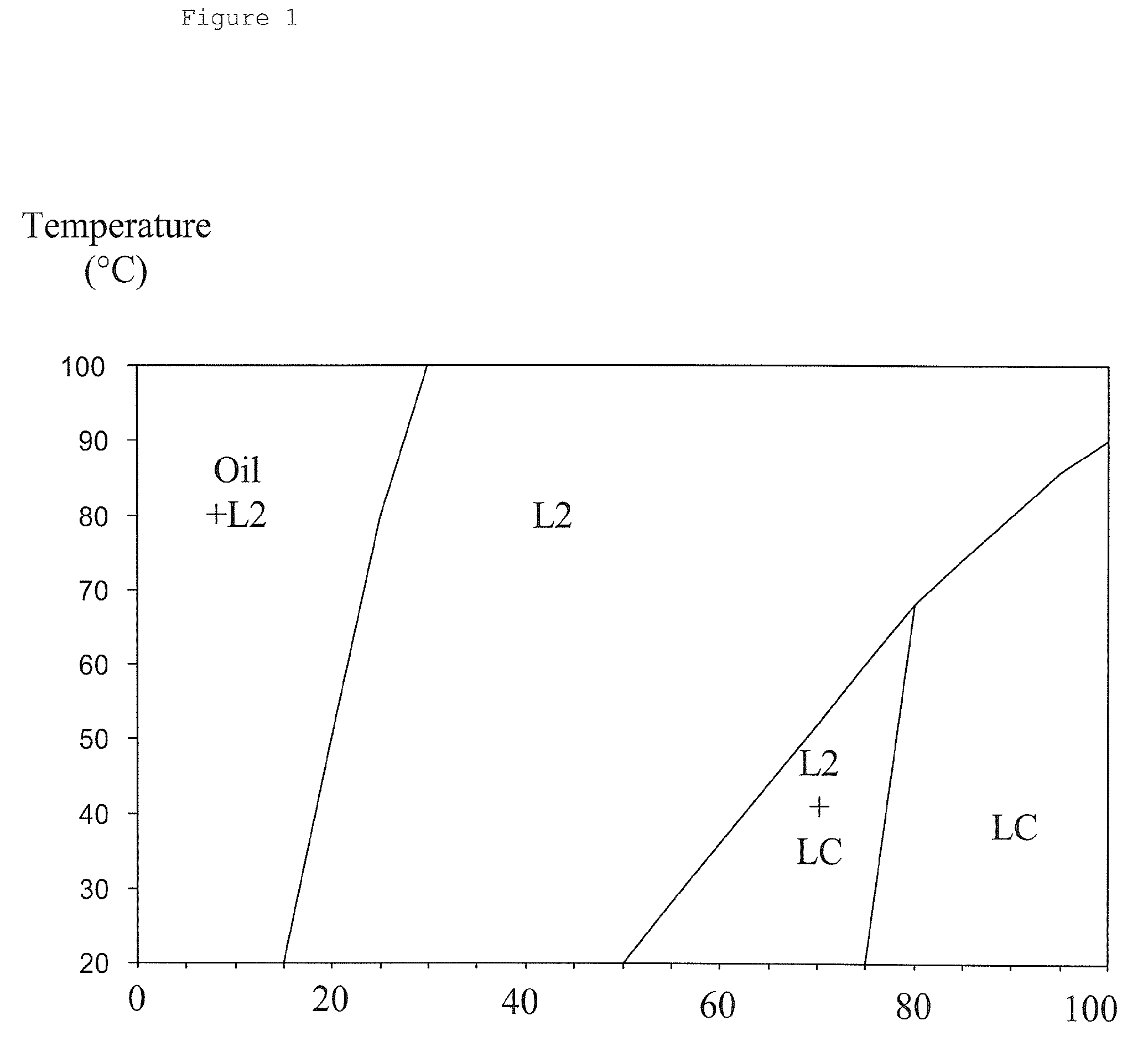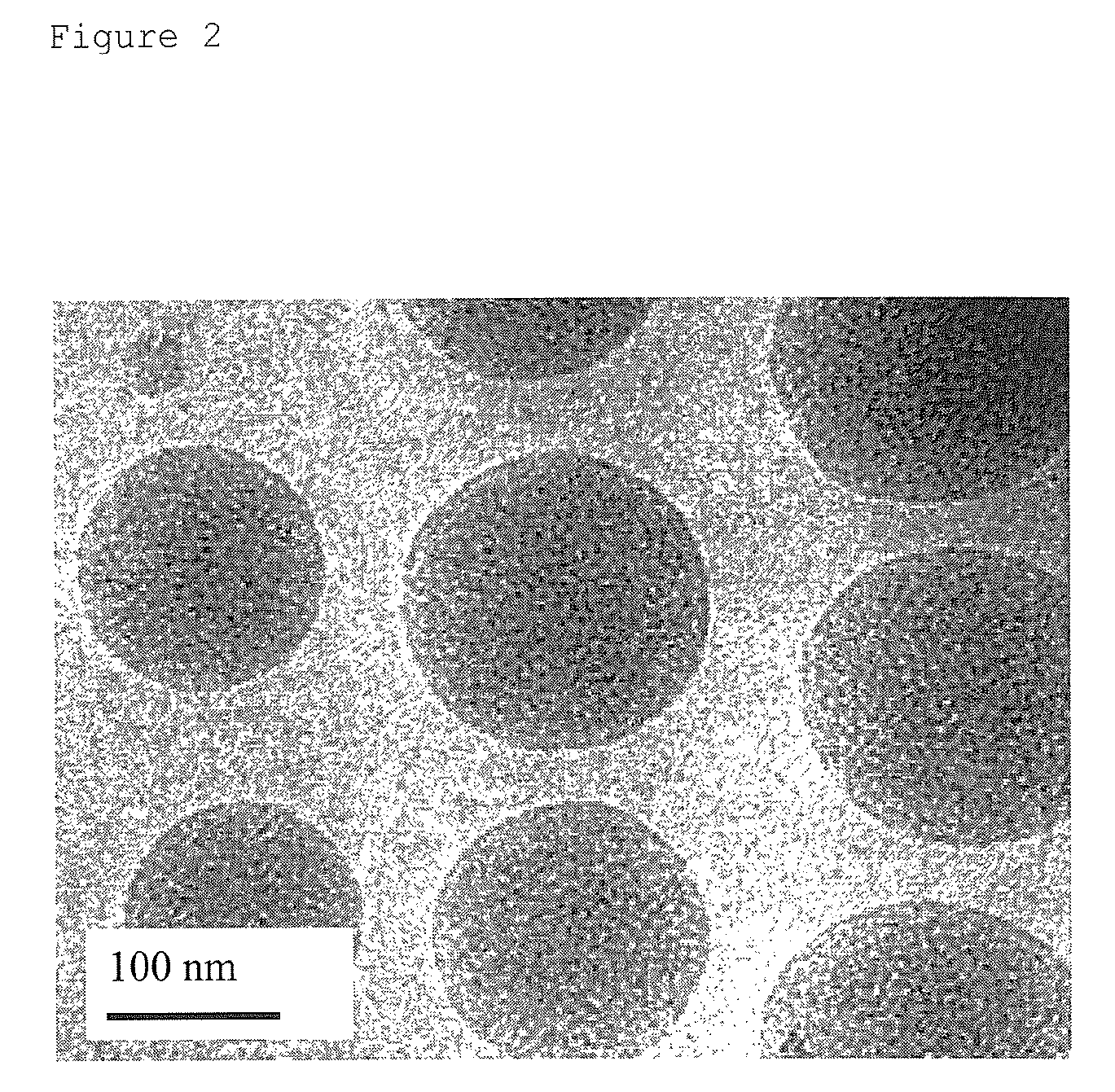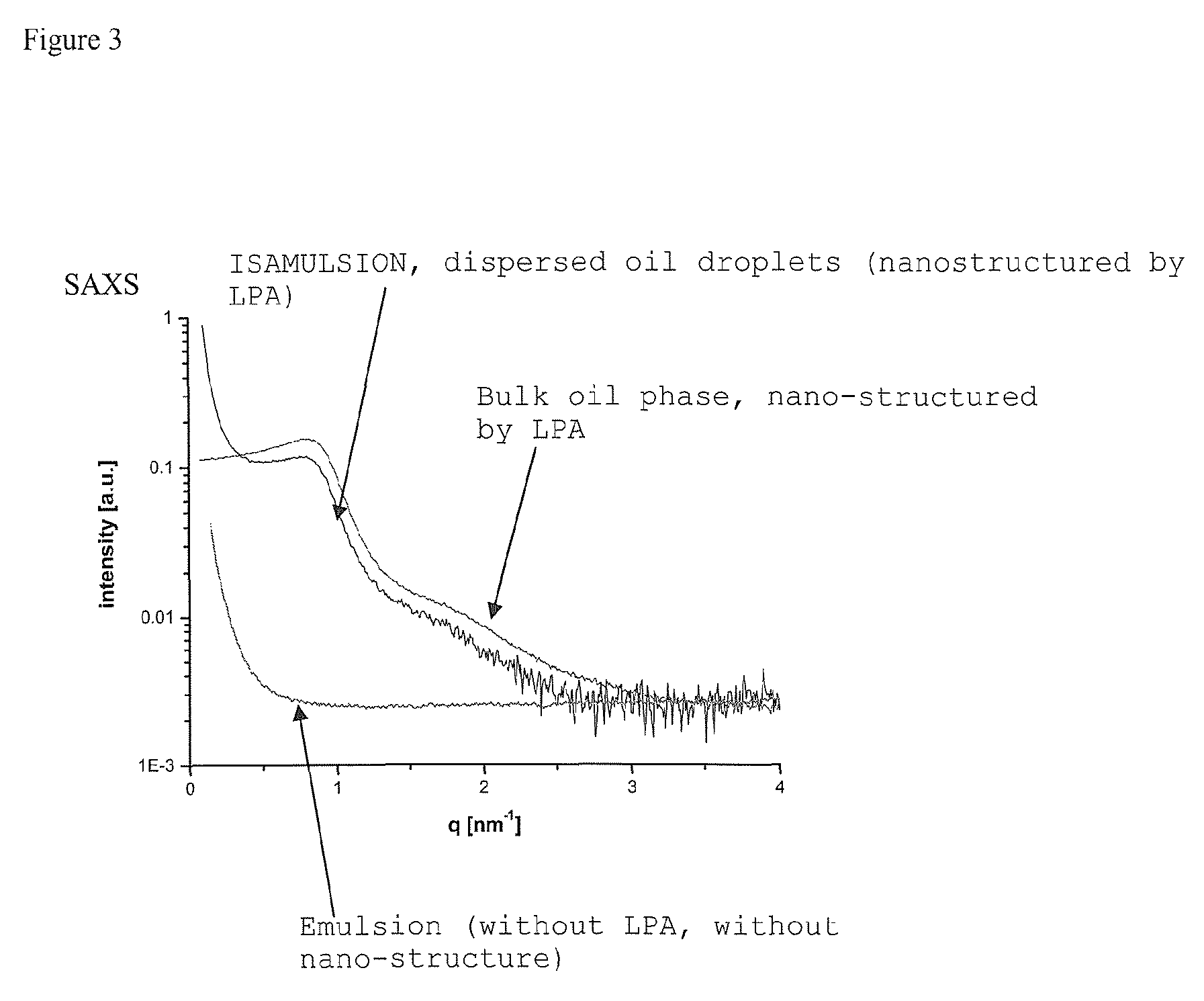Oil-in-water emulsion and its use for the delivery of functionality
a technology of oil-in-water emulsion and functional delivery, which is applied in the direction of deodrants, medical preparations, and infections, and can solve the problems of general turbidity and thermodynamic instability
- Summary
- Abstract
- Description
- Claims
- Application Information
AI Technical Summary
Benefits of technology
Problems solved by technology
Method used
Image
Examples
example 1
[0126]Generic Examples of an ISAMULSION obtained by homogenization and containing a mineral oil. This example is used to show how an ISAMULSION can be characterized and distinguished from ordinary oil in water emulsions.
[0127]Typically 1-5 wt % of a mineral oil, such as tetradecane, was added to 95 wt % water containing already 0.375 wt % of the hydrophilic emulsifier (Tween 80, Merck or Pluronic F127, BASF). 0.5-4 wt % LPA (glycerol monolinoleate, emulsifier TS-PH 039, Danisco, Norway) was then added to the mixture. The total amount of lipophilic molecules (mineral oil+LPA) was 4.625 wt %.
[0128]Ultrasonication was then carried out for 20 minutes. The ISAMULSION character of the emulsions was confirmed by cryo-TEM images and SAXS curves such as the ones of FIG. 2 and FIG. 3-4. FIG. 2 and FIG. 3 were obtained from those generic examples with a composition of 2.4 wt % mineral oil (tetradecane)-2.2 wt % LPA-0.375 wt % hydrophilic emulsifier (pluronic F127)-95 wt % water. In addition, c...
example 2
ISAMULSIONS Using a Triglyceride Oil
[0131]This example is used to show how an ISAMULSION from the present invention can be characterized.
[0132]0.5-4.5 wt % of soybean oil was mixed with 0.5-4 wt % LPA (Dimodan U / J, Danisco, Denmark). This mixture was added to 95 wt % water containing 0.375% of the hydrophilic emulsifier (Pluronic F127). The total amount of lipophilic molecules (oil+LPA) was 4.625 wt %.
[0133]The mixture was sheared using a Polytron (Kinematica, Switzerland) position 5 for five minutes.
[0134]The ISAMULSION character of the emulsions was confirmed by cryo-TEM images (FIG. 6a), SAXS (FIG. 7a) and examination of the corresponding bulk samples (as it was done for example 1). FIGS. 6a-7a were obtained from those generic examples with a composition of 1.525 wt % triglyceride oil-3.1 wt % LPA-0.375 wt % hydrophilic emulsifier (pluronic F127)-95 wt % water. No internal structure is observed inside ordinary soybean oil droplets, e.g. in the absence of LPA (FIGS. 6b-7d).
[0135]A...
example 3
[0136]ISAMULSIONS which contain mixtures of several LPAs. This example is used to show how an ISAMULSION can be characterized.
[0137]An ISAMULSION containing a mixture of a saturated and unsaturated monoglyceride:
[0138]0-1.8% mineral oil (tetradecane) was added to 0.2-2% LPA. The LPA was a mixture of saturated monoglycerides (Dimodan HR, (saturated monoglycerides containing 90% of glycerol monostearate), Danisco, Denmark) and unsaturated monoglycerides (Dimodan U / J, Danisco, Denmark). The total amount of lipophilic molecules (Oil+LPA) was 3%. The mixture was added to 96.7% water containing 0.3% Tween 80 as hydrophilic emulsifier. Ultrasonication was carried out for 2 minutes. As indicated by the pseudo binary phase diagram of the saturated monoglyceride (Dimodan HR)-unsaturated monoglyceride (Dimodan U / J) mixture obtained at 20% water (FIG. 8), the formation of a stable L2 phase can be obtained at high temperatures after addition of the saturated monoglyceride to the unsaturated mono...
PUM
 Login to View More
Login to View More Abstract
Description
Claims
Application Information
 Login to View More
Login to View More - R&D
- Intellectual Property
- Life Sciences
- Materials
- Tech Scout
- Unparalleled Data Quality
- Higher Quality Content
- 60% Fewer Hallucinations
Browse by: Latest US Patents, China's latest patents, Technical Efficacy Thesaurus, Application Domain, Technology Topic, Popular Technical Reports.
© 2025 PatSnap. All rights reserved.Legal|Privacy policy|Modern Slavery Act Transparency Statement|Sitemap|About US| Contact US: help@patsnap.com



